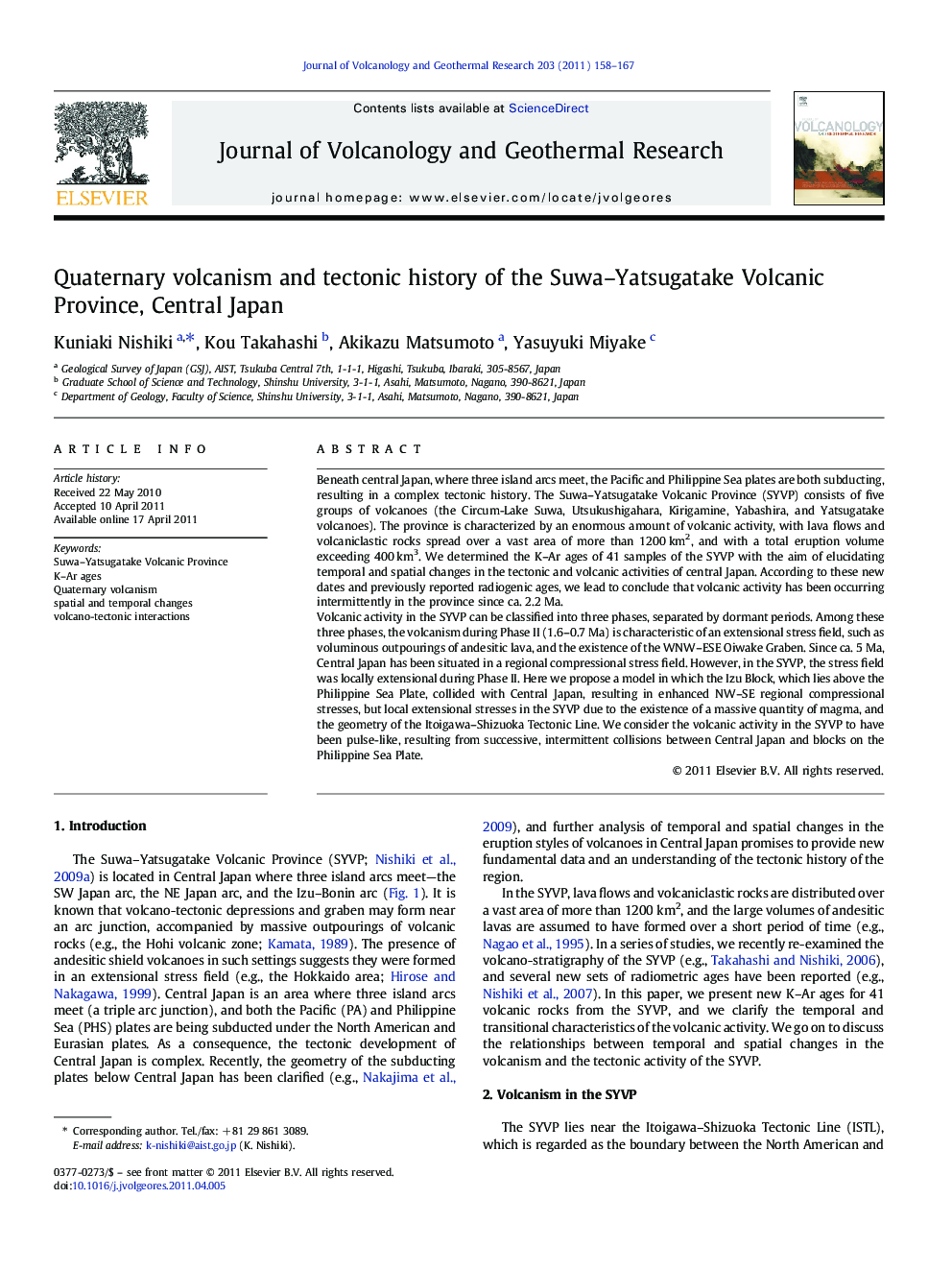| Article ID | Journal | Published Year | Pages | File Type |
|---|---|---|---|---|
| 4713602 | Journal of Volcanology and Geothermal Research | 2011 | 10 Pages |
Beneath central Japan, where three island arcs meet, the Pacific and Philippine Sea plates are both subducting, resulting in a complex tectonic history. The Suwa–Yatsugatake Volcanic Province (SYVP) consists of five groups of volcanoes (the Circum-Lake Suwa, Utsukushigahara, Kirigamine, Yabashira, and Yatsugatake volcanoes). The province is characterized by an enormous amount of volcanic activity, with lava flows and volcaniclastic rocks spread over a vast area of more than 1200 km2, and with a total eruption volume exceeding 400 km3. We determined the K–Ar ages of 41 samples of the SYVP with the aim of elucidating temporal and spatial changes in the tectonic and volcanic activities of central Japan. According to these new dates and previously reported radiogenic ages, we lead to conclude that volcanic activity has been occurring intermittently in the province since ca. 2.2 Ma.Volcanic activity in the SYVP can be classified into three phases, separated by dormant periods. Among these three phases, the volcanism during Phase II (1.6–0.7 Ma) is characteristic of an extensional stress field, such as voluminous outpourings of andesitic lava, and the existence of the WNW–ESE Oiwake Graben. Since ca. 5 Ma, Central Japan has been situated in a regional compressional stress field. However, in the SYVP, the stress field was locally extensional during Phase II. Here we propose a model in which the Izu Block, which lies above the Philippine Sea Plate, collided with Central Japan, resulting in enhanced NW–SE regional compressional stresses, but local extensional stresses in the SYVP due to the existence of a massive quantity of magma, and the geometry of the Itoigawa–Shizuoka Tectonic Line. We consider the volcanic activity in the SYVP to have been pulse-like, resulting from successive, intermittent collisions between Central Japan and blocks on the Philippine Sea Plate.
Research Highlights► We are able to divide the periods of volcanic activity in the SYVP into three phases. ► Phase II subjected to a locally strong extensional stress field. ► This stress occurred during a period of enhanced regional compressional stress. ► These developments were related to collision of the block with Central Japan. ► The pulse-like volcanism is the result of intermittent changes in the stress field.
